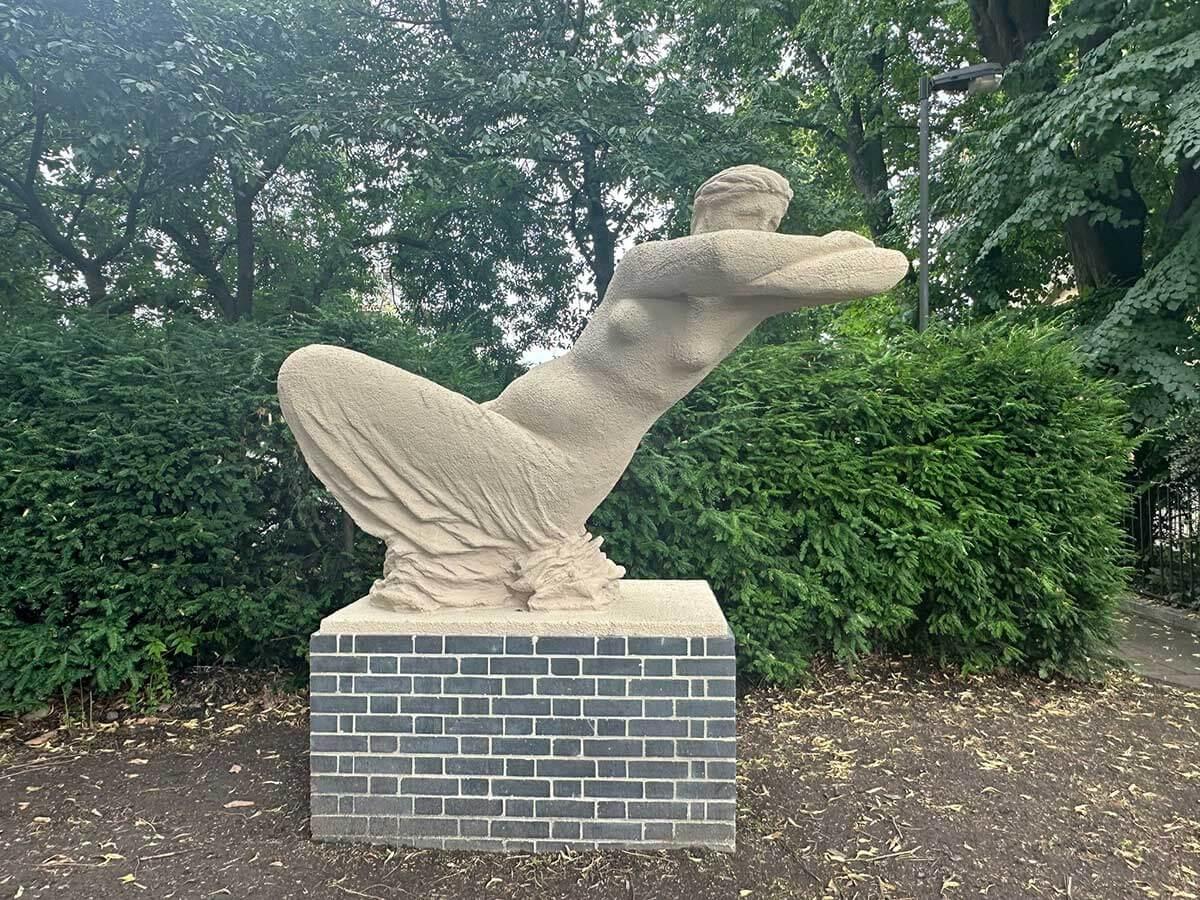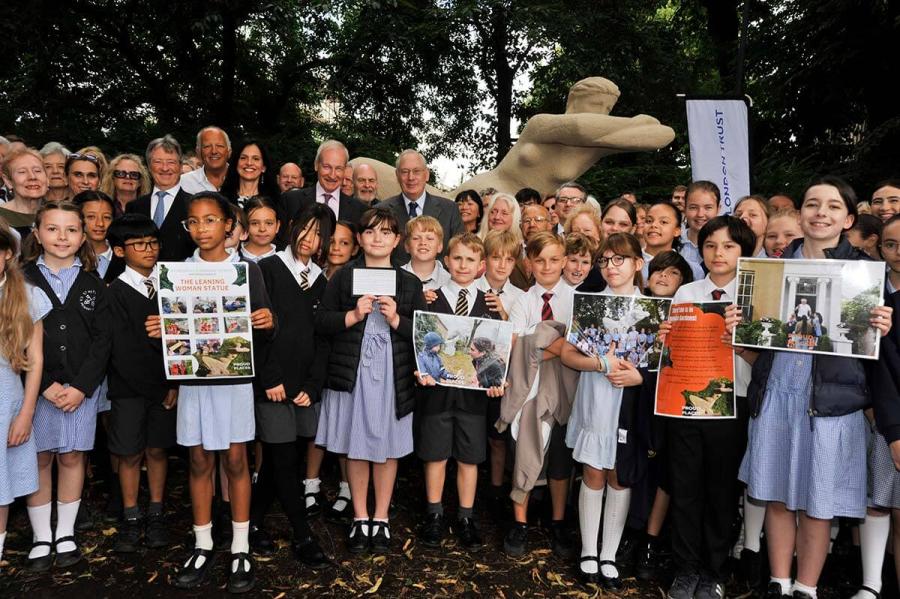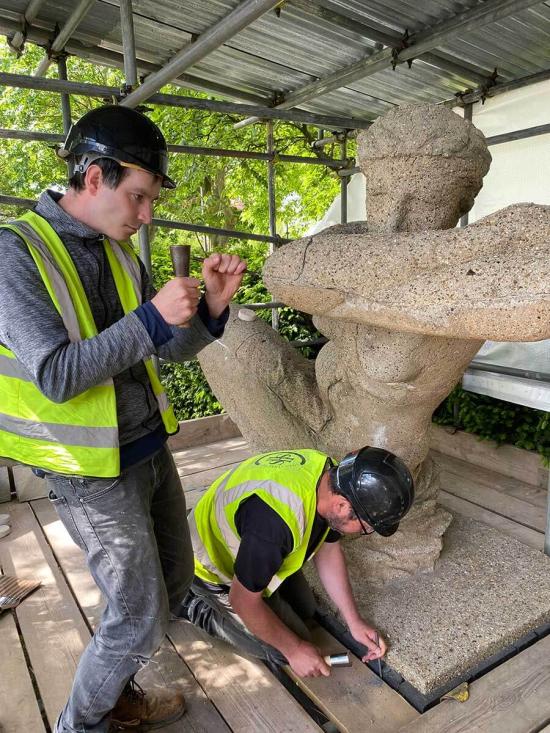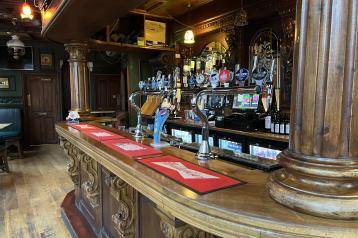
Hammersmith's famous Leaning Woman sculpture has never looked better after being restored to its full glory with the help of local pupils.
The Grade ll-listed statue of a reclining lady, created by sculptor Karel Vogel, has amused motorists on the Great West Road for nearly 70 years. However, it was placed on the 'At Risk' register as a result of weather erosion and the effects of pollution.
But now she's looking splendid again on her plinth near St Peter's Church, thanks to a campaign led by Hammersmith & Fulham Council and the Heritage of London Trust.
Cllr Sharon Holder, H&F Cabinet Member for Public Realm, said: "The sculpture has always been a local landmark in Hammersmith and it's fantastic to see it looking great again."
The Duke of Gloucester performed the unveiling, cheered on by 200 local schoolchildren who helped fundraise for the restoration, and took a hands-on role in conservation work.

Campaign to restore
Listed as 'at risk' in 2016, the campaign to restore it began two years later, with an initial grant of £10,000, topped up by £12,000 from the public and £16,000 from H&F Council, plus landscaping costs.
Restoration involved removing previous attempts at repair, stopping the corrosion, filling in cracks and adding a protective coating. Undergrowth has been cut back, a display panel added and a path will soon be laid to the statue for visitors.
At the ceremony, the Duke was joined by the Deputy Mayor Cllr Daryl Brown and St Peter's Residents' Association chair Joanna Edmunds.
Pupils from St Peter's and Good Shepherd primary schools helped with the restoration. Rebecca Chakreska, nine, said: "It's important for young people and communities to get involved as it's an opportunity to learn more about their community."
While Rock Montgomery-Randall, 11, added: "It's been an amazing experience. We helped raise awareness about this significant piece of art." And Grace Mensah, 11, said: "We went door to door to ask people to donate to help us to bring this Leaning Woman back stronger."
Carved concrete sculptures made by pupils from Westside Alternative Provision School were also displayed at the unveiling.
Dr Nicola Stacey, of Heritage of London Trust, said: "We're thrilled that over 400 young people were involved in this project locally." She also praised the support from residents and the council.
History of the Leaning Woman
The Leaning Woman was commissioned by the London County Council in 1958 following a widening of the A4, as a way of compensating Hammersmith residents for losing green space.
Vogel – a Czech refugee from Nazi Germany who arrived in London in 1938 – created a calming, gravity-defying neo-classical sculpture to contrast with the cars whizzing by.

He made it out of reinforced concrete, which only has a limited lifespan when exposed to the elements. The Leaning Woman had begun to crumble, with rusting iron peeping through.
The model for the work was another refugee, East German émigré Jutta Cardew. Her son, Alex, attended the unveiling and revealed that the model had posed, leaning on an upturned broom!
Opinions about the sculpture were divided at the time. One Hammersmith councillor called it 'a modern monstrosity'. But the community grew to love her.





